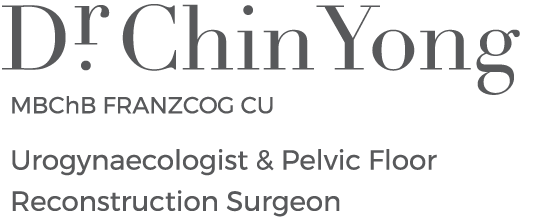Postpartum Bladder Dysfunction
Bladder control issues that occur following pregnancy and childbirth. Some women have issues with bladder emptying as a result of an overdistension injury of the bladder.
Who are at risk of postpartum bladder dysfunction?
First pregnancy
Prolonged 2nd stage of labour
Instrumental delivery – forceps/ventouse
Caesarean birth
Epidural anaesthesia
Perineal trauma
Large for gestational age baby
What are the symptoms to look out for?
Lack of or no sensation to void
Inability to void 6 hours after birth or catheter removal
Abdominal pain or discomfort
Urinary urgency or frequency
Passing small amount of urine
Hesitancy or urinary dribbling
Sensation of incomplete bladder emptying
Urinary incontinence
Can postpartum bladder dysfunction be prevented?
All women who had given birth should be on high alert for potential bladder dysfunction due to the presence of risk factors as stated above.
Simple measures that can be implemented to prevent bladder dysfunction:
Aim to void every 2-3 hours during labour or the use of indwelling catheter if regional anaesthesia is offered
Adequate analgesia use after delivery
Use of cold packs on the perineum to reduce perineal swelling
Laxatives use to prevent constipation
Scheduled or timed voiding every 3 to 4 hours after birth to promote bladder emptying or over distension of the bladder
Strict fluid balance monitoring to avoid fluid overload
Bladder scan to be performed by nursing or midwifery staff to check for residual volume in the bladder after passing urine
How can bladder dysfunction be managed?
Immediately after delivery:
Insertion of indwelling catheter to allow bladder rest if unable to pass urine or with high residual volume in the bladder after void
A trial of void (assessing your ability to empty your bladder sufficiently by measuring the urine you pass and left over urine in the bladder after each void) will take place after 24 hours.
Indwelling catheter will be reinserted if bladder emptying remains inadequate, followed by a repeat trial of void after 1 week.
Women with persistent bladder dysfunction will be taught to perform self-catheterisation using a short plastic catheter
Pelvic floor physiotherapist will be involved to provide education and advice on voiding techniques to assist with bladder emptying.
Long term management:
Further assessment and review by urogynaecologist/pelvic floor surgeon may be warranted if bladder issues persist after 3 months of conservative management. Bladder testing (urodynamics study) may be considered if ongoing issues persist with bladder emptying or urinary incontinence
Management options:
Conservative management with physiotherapist, double/triple voiding technique
Intermittent self-catheterisation
Medications – limited evidence of use in postpartum women
Sacroneuromodulation (SNM) – insertion of a pacemaker like device in lower back to regulate your bladder function
Percutaneous tibial nerve stimulation (PTNS) – stimulation of nerve controlling bladder function using a small acupuncture needle close to the ankle. Effective treatment for an overactive bladder or urge incontinence but limited evidence of use in voiding difficulty
